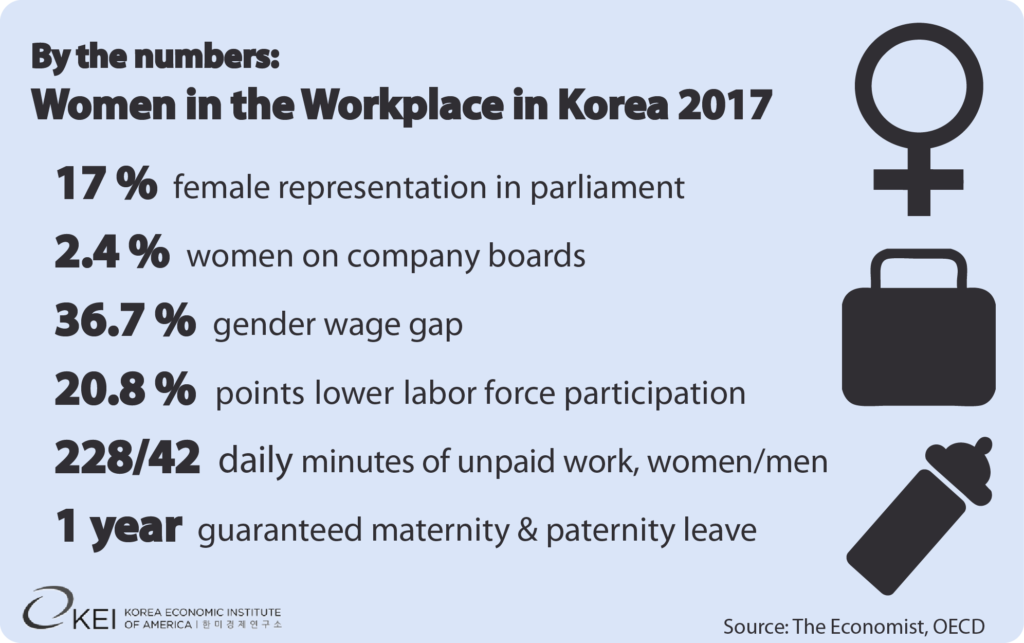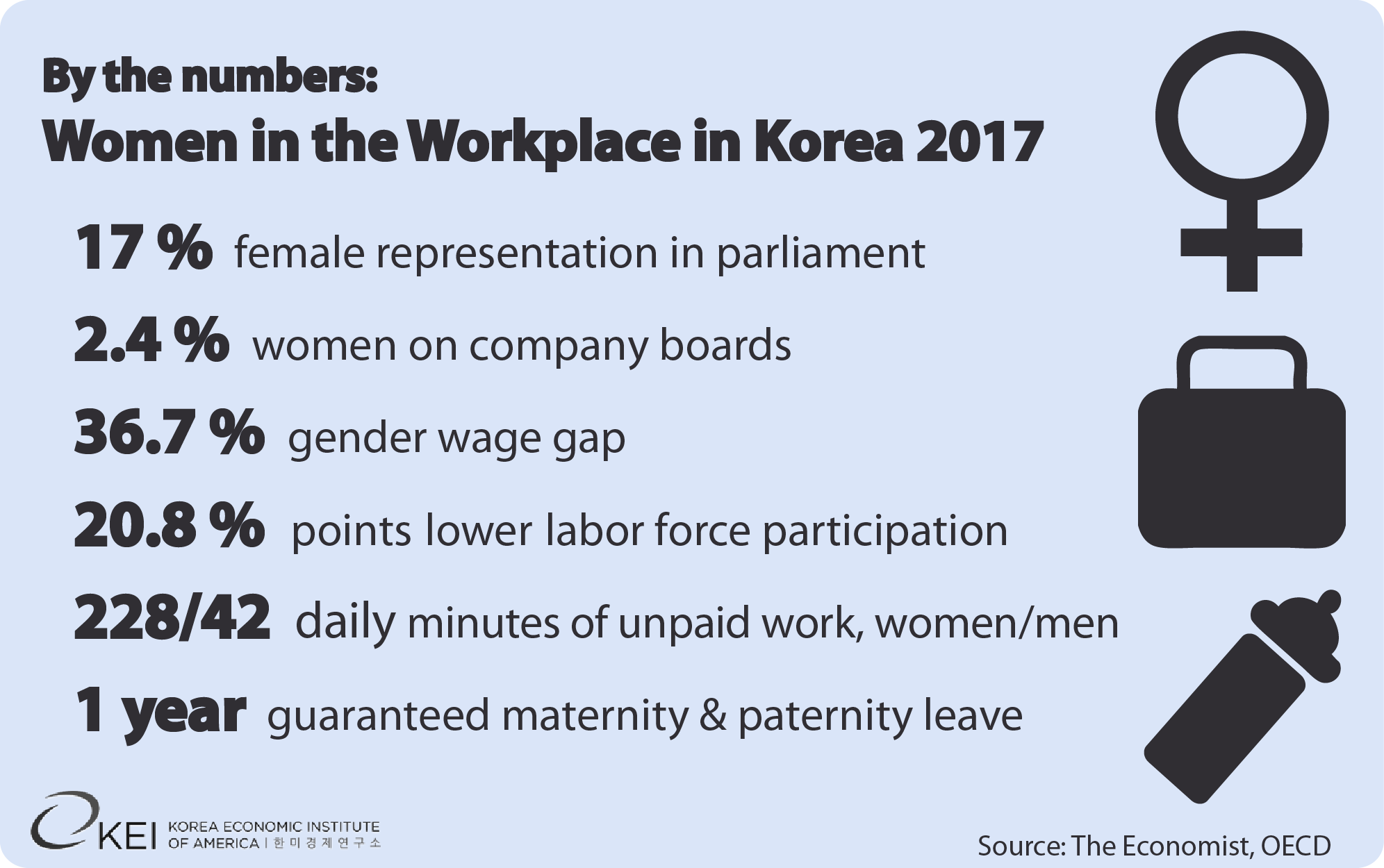The Peninsula
International Women’s Day in South Korea – Slow but Steady Progress

By Jenna Gibson
Two years ago, on Women’s Day 2016, I wrote a blog titled “On International Women’s Day, South Korea Needs to Do More,” which focused on new (at that time) numbers showing South Korea was the lowest in the OECD when it comes to women’s issues such as the labor-force participation rate, gender wage gap, and the number of women in leadership roles in government and businesses.
At the time, I called on South Korea’s leadership to do more, to take concrete steps to improve the lives of women in their country. Now, two years later, has South Korea made any progress on closing the gender gap and elevating the role of women in society?
Unfortunately, most of the data says no. In the 2017 version of the Economist’s Glass Ceiling Index, South Korea is still last in the OECD. The country ranks last in such measures as gender wage gap, women in managerial positions, and women on company boards, and second-to-last in the labor force participation rate. Of course, none of these issues are easy to solve, and it’s unrealistic to expect them to have changed drastically in just a few years. However, this type of ranking can continue to keep the issue in front of South Korea’s leadership, and can keep the pressure on those in power to step up and push for policy changes.

But while the overall data may not show much improvement, there is significant societal movement toward positive change. After the tragic murder of a young woman in Gangnam in 2016, in which the perpetrator attacked the 23-year-old at random because he had felt “ignored and belittled” by women, there was a flood of attention on the issue of domestic violence and violence against women in Korea. Now, with the Me Too movement continuing to gain steam in Korea, a major politician, Governor Ahn Hee-jung, just announced his resignation amid accusations of sexual assault.
In addition to these societal pushes, there have been some policy changes that should help improve the gender inequality index in the long term, if properly implemented. For example, last summer the Korean government announced they are instituting a blind hiring process for public sector jobs, meaning hiring managers can no longer ask for applicants’ photos, family background, and other personal information not related to the job. While this move was advertised more as a way to combat the use of family ties in the hiring process, it will also help combat hiring practices that disproportionately affect women, such as questions about appearance and marital status.
Another policy change that could help improve the lives of women in the Korean workforce is the push to eliminate the use of irregular workers. The Seoul city government announced last summer that it would convert 24,000 contract workers to full-time status, and President Moon has supported doing the same for other public sector entities. According to KEI research from labor market expert Dr. Vladimir Hlasny, Korea’s reliance on short-term and irregular jobs is one of the factors keeping women’s labor force participation low. “Women who get married or return from maternity leave are relegated to non-regular jobs, rather than being put on an alternative schedule or being retrained,” he wrote in his paper for KEI. “Workers from disadvantaged backgrounds, childbearing-age women, the disabled, and the elderly are largely excluded from participating in the primary labor market, and have consequently lagged behind in their earnings, non-pay benefits and various opportunities for advancement. This in turn reduces their incentives for skill acquisition in the first place.”
These policy changes have thus far only affected the public sector, with private companies still reluctant to implement policies like blind hiring that could bring women into the Korean workforce. But while it’s too soon to tell if there will be a deeper, systematic change in Korea in the coming years, it is encouraging to see greater focus on issues that women face every day. And it’s clear that these issues are intrinsically linked to each other – by making progress on labor force participation, for example, it increases the pool of talented women who can make their way up to managerial positions, which will in turn allow them to push for policies that can improve the lives of women workers. This is a long-term goal, of course, but small changes in government policy now can get the ball rolling toward a more equitable future for Korea’s women.
Jenna Gibson is the Director of Communications at the Korea Economic Institute of America. The views expressed here are the author’s alone.
Photo from Pin Hsuan’s photostream on flickr Creative Commons.
